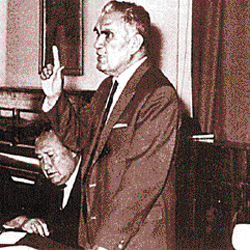
Martín Cárdenas (botanist)
Encyclopedia

Bolivia
Bolivia officially known as Plurinational State of Bolivia , is a landlocked country in central South America. It is the poorest country in South America...
botanist. Cárdenas is considered one of the most important botanists in Bolivia's history.
He is responsible for recording some 6,500 species of plants in his native country.
Biography
In 1918, he graduated as a Bachelor in Sciences and Letters and secured a scholarship to continue his studies at the Instituto Normal SuperiorInstituto Normal Superior
The Instituto Normal Superior Adventista is an institute in La Paz, Bolivia. It is part of the Universidad Adventista de Bolivia . The university was established on June 28, 1956, authorized by the Bolivian Ministry of Education....
in La Paz
La Paz
Nuestra Señora de La Paz is the administrative capital of Bolivia, as well as the departmental capital of the La Paz Department, and the second largest city in the country after Santa Cruz de la Sierra...
, where he specialized in Natural Sciences and Chemistry. He graduated in 1922. On his vacations in Cochabamba
Cochabamba
Cochabamba is a city in central Bolivia, located in a valley bearing the same name in the Andes mountain range. It is the capital of the Cochabamba Department and is the fourth largest city in Bolivia with an urban population of 608,276 and a metropolitan population of more than 1,000,000 people...
he went for long walks by gathering plants, of which he soon recorded their characteristics in books and journals at the Municipal Library of La Paz. At that time, Cardenas had met Swedish botanist Erik Asplund, who had also shown a keen interest in studying the plants in Bolivia. Asplund played an important role in enhancing his knowledge of botany and was an early mentor for him.
By May 1922, Cárdenas was already professor in the Special Natural Sciences and Chemistry, being an auxiliary senior instructor and later obtained a title at the Instituto Normal Superior de La Paz.
In his career, over a 40 or 50 year period, Cárdenas classified 6,500 species of the flora of Bolivia, and described 180 new species of cactus
Cactus
A cactus is a member of the plant family Cactaceae. Their distinctive appearance is a result of adaptations to conserve water in dry and/or hot environments. In most species, the stem has evolved to become photosynthetic and succulent, while the leaves have evolved into spines...
, with 16 varieties. He also registered 26 types of Solanum tuberosum with six varieties.

